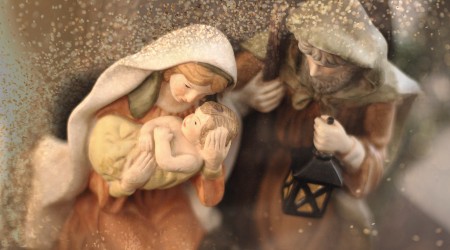Doctor finds a way to treat a controversial angina in the heart's tiny arteries
FREE Catholic Classes
The Orlando Sentinel (MCT) - Most chest pain is caused by fatty deposits that hinder blood flow through the main, spaghetti-thick arteries of the heart.
Highlights
McClatchy Newspapers (www.mctdirect.com)
3/27/2009 (1 decade ago)
Published in Health
But for some patients, the problem is rooted in the thousands of tiny arteries that feed the muscle. This is a form of chest pain called microvascular angina _ a puzzling condition that defies most tests and may plague millions of Americans.
Konrad Krall of Deltona, Fla., used to be struck by chest pain at any time. It could wake him from a sound sleep or startle him while he worked quietly at his desk. Yet tests showed his main arteries were clear. Now he is being treated for microvascular angina.
"I'm beginning to notice some changes," said Krall, 49, who interprets cancer test results in a medical laboratory. "A lot of things I used to think were normal aging, just getting out of breath easily, are starting to improve. I feel better and better."
Microvascular angina is controversial. Some doctors don't use that particular term, preferring "Cardiac Syndrome X" instead.
Whatever the terminology, physicians agree that the heart's tiniest arteries _ invisible to the eye _ can malfunction in a way that triggers pain.
Dr. Ken Kronhaus, a Lake County, Fla., cardiologist, said the vessels contract and expand with blood flow, providing oxygen throughout the dense heart tissue.
The lining of the vessels is crucial, releasing substances that keep the arteries working smoothly. When the lining is impaired, blood flow is hampered and the heart does not get enough oxygen, triggering pain.
Unfortunately, microvascular angina is hard to pin down. Routine cardiology tests, such as a stress test or CT scan, may not show any signs of the underlying problem, Kronhaus said.
Patients even can undergo heart catheterization, a procedure that takes an internal look at the main coronary arteries. If they're clear, patients may be told nothing is wrong with their tickers.
"For a long time, we would tell people it can't be their hearts, yet they would continue to have symptoms," Kronhaus said. "But now we understand that many of these cases are due to microvascular" angina.
UNKNOWN CAUSE
Doctors do not know what causes the condition. It seems to be more common in women around menopause, suggesting a hormonal link. Others say women's heart arteries are smaller to begin with, so problems with their tiny vessels are likely to affect them more.
Estimates vary widely, suggesting that anywhere from 3 million to 10 million Americans suffer with the ailment.
Dr. Kanu Chatterjee, a fellow with the American College of Cardiology, said microvascular angina has become a catchall for hard-to-explain chest pain.
He warns that patients with other conditions, such as fibromyalgia, might be incorrectly lumped into the category.
"This is a very misused term; it's being used for almost any woman without (obvious) coronary artery disease and chest pain," said Chatterjee, also a professor of medicine at University of California, San Francisco.
One difficulty is that microvascular angina cannot be diagnosed in a straightforward way. Instead, doctors rule out other possible causes, leaving the tiny arteries as the last suspect.
"I do think it exists, but it's not all that common," said Dr. Arsenio Rodriguez, an Orlando, Fla., cardiologist and spokesman for the American Heart Association. "You have to be really careful that you've excluded all the other possible causes" first.
In itself, microvascular angina is not deadly, but untreated chest pain can be debilitating. Doctors also think it might be a warning sign for future heart problems, including life-threatening blockages in the big arteries.
DRUGS, LIFESTYLE CHANGES
Treatment typically includes drugs that improve blood flow to the heart, such as calcium channel blockers or beta blockers. Lifestyle changes are recommended, just as they are for any other heart patient: Don't smoke, lose weight, exercise regularly and get diabetes under control.
Kronhaus said doctors are looking for better ways to treat microvascular angina.
"I don't think there's any debate any longer in the cardiology community about whether this exists," Kronhaus said. "At least we're past the point where women are being sent to the psychiatrist's office because they're being told their pain is all in their heads."
___
SQUEEZING IN RELIEF
Sherry Danczyk is back in her exercise classes, using weights and working out regularly.
She credits a type of heart therapy called EECP _ enhanced external counterpulsation _ as providing relief from her microvascular angina.
"It didn't happen immediately, but over time, it was really wonderful," said Danczyk, of Ocala, Fla.
Danczyk's doctor, Ken Kronhaus, is using EECP for chest pain linked to the tiniest vessels in the heart.
Patients rest on a table, with both legs in cufflike devices that squeeze hard enough to lift them up slightly. Each treatment lasts for an hour and is carried out five times a week for seven weeks. EECP is an approved therapy that is covered by many insurance plans and runs about $5,000 for a complete course. Danczyk said it was uncomfortable at times, but not painful.
The theory is that the carefully orchestrated squeezing stimulates improved blood flow in the small arteries throughout the heart. Some doctors aren't impressed with the treatment.
"There is absolutely no proof that EECP is beneficial for the microvascular patient," said Dr. Kanu Chatterjee from University of California, San Francisco.
But Kronhaus is tracking the patients he treats and documenting positive results. He has used the therapy for about 200 people with the condition during a seven-year period. He is researching the approach with Dr. William Lawson from Stony Brook University Medical Center in New York. Both doctors think many microvascular patients can get long-lasting relief from EECP.
In contrast, Kronhaus said, roughly half of all patients treated with medicine do not respond well.
"You can put someone on medication, but that's lifelong, and EECP seems to be a lot more effective and in the long run, a lot cheaper," Kronhaus said.
___
© 2009, The Orlando Sentinel (Fla.).
Join the Movement
When you sign up below, you don't just join an email list - you're joining an entire movement for Free world class Catholic education.

-

-
Mysteries of the Rosary
-
St. Faustina Kowalska
-
Litany of the Blessed Virgin Mary
-
Saint of the Day for Wednesday, Oct 4th, 2023
-
Popular Saints
-
St. Francis of Assisi
-
Bible
-
Female / Women Saints
-
7 Morning Prayers you need to get your day started with God
-
Litany of the Blessed Virgin Mary
Daily Catholic
 Daily Readings for Wednesday, December 25, 2024
Daily Readings for Wednesday, December 25, 2024 St. Eugenia: Saint of the Day for Wednesday, December 25, 2024
St. Eugenia: Saint of the Day for Wednesday, December 25, 2024 Christmas Prayer: Prayer of the Day for Wednesday, December 25, 2024
Christmas Prayer: Prayer of the Day for Wednesday, December 25, 2024- Daily Readings for Tuesday, December 24, 2024
- St. Adele: Saint of the Day for Tuesday, December 24, 2024
- Christmas Prayer: Prayer of the Day for Tuesday, December 24, 2024
![]()
Copyright 2024 Catholic Online. All materials contained on this site, whether written, audible or visual are the exclusive property of Catholic Online and are protected under U.S. and International copyright laws, © Copyright 2024 Catholic Online. Any unauthorized use, without prior written consent of Catholic Online is strictly forbidden and prohibited.
Catholic Online is a Project of Your Catholic Voice Foundation, a Not-for-Profit Corporation. Your Catholic Voice Foundation has been granted a recognition of tax exemption under Section 501(c)(3) of the Internal Revenue Code. Federal Tax Identification Number: 81-0596847. Your gift is tax-deductible as allowed by law.







 Daily Readings for Wednesday, December 25, 2024
Daily Readings for Wednesday, December 25, 2024 St. Eugenia: Saint of the Day for Wednesday, December 25, 2024
St. Eugenia: Saint of the Day for Wednesday, December 25, 2024 Christmas Prayer: Prayer of the Day for Wednesday, December 25, 2024
Christmas Prayer: Prayer of the Day for Wednesday, December 25, 2024


